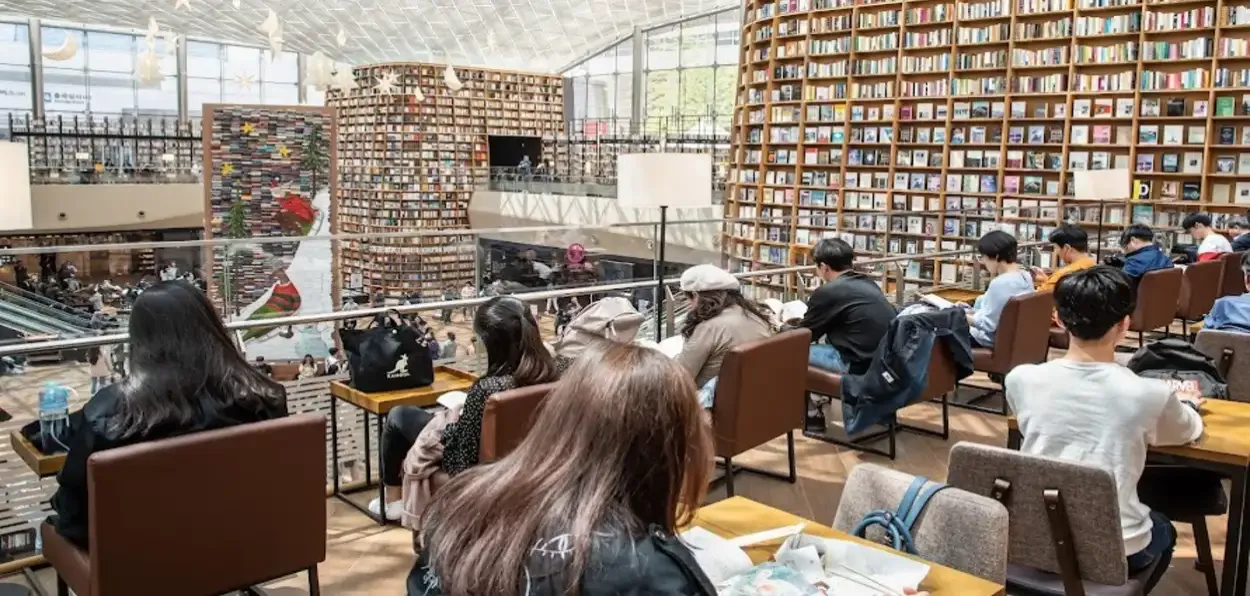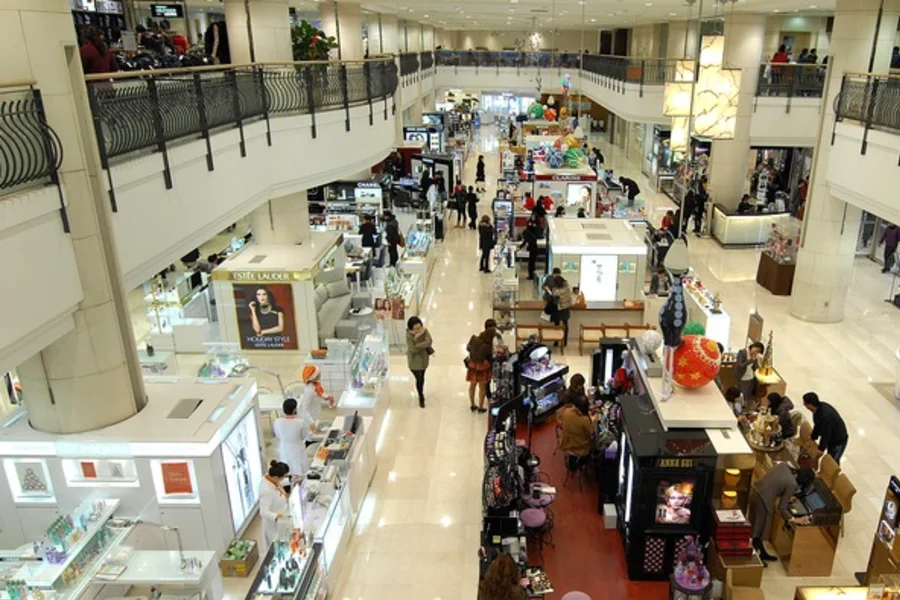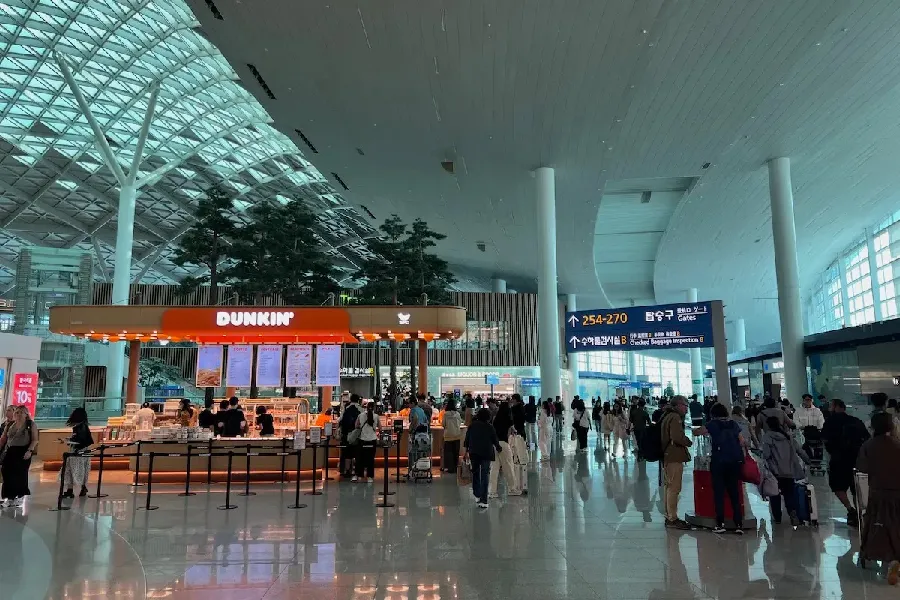
 Dr. Sharat Barkatki
Dr. Sharat Barkatki
A few days ago, I left New Delhi on an Air India flight to meet my daughter and son-in-law in South Korea. A gentleman sat in the seat next to me. I could see the South Korean passport in the man's hand and assumed he was a Korean. After the flight, I saw some passengers looking at their laptops, and others enjoying their favorite songs and movies on the In-Flight Entertainment (IFE) screen.
I fell asleep. Once I opened my eyes, I saw the Korean next to me reading the Korean translation of the Bhagwad Gita. I had no idea that believers in Confucian philosophy could sink into the pages of the Gita. After the plane landed at Incheon Airport in Seoul, I went to the immigration officer and did not see the Korean man.
After completing the formalities at the immigration counter, I joined my daughter and son-in-law who were waiting outside the airport. On the way from the airport to Chuan, I told them about my experience on the airplane.
In the evening, we visited a big mall called Starfield Mall. Inside the mall, we went to a large library which was spread over four floors. I was surprised to see it. In India, we can't even think of visiting a shopping mall to read.
 A Mall in Seoul with book reading kiosks
A Mall in Seoul with book reading kiosks
I am even more surprised to see mothers reading books to their young children. Almost 98 percent of the books were in Korean and only 2 percent in English. The library had books are on various subjects - management, self-confidence, economics, history, science, and world politics, and a few on poetry and stories.
Everywhere I go, I see people of all ages reading books - Be it in metro trains, parks, cafes, buses, or shopping malls. Both printed books and e-books are popular.
I had an image of South Korea being a technology giant as companies such as Samsung, LG, and Kia have captured the global market. I thought that the Koreans would be busy with these things and was surprised to see the book-reading habits of common people.
I saw a similar library at the Starfield Mall in Seoul and AK Plaza Mall. Korean language books are everywhere; no English books are available, although the name of the books is written in English. The English language is of little importance here.
 Incheon Airport in Seoul
Incheon Airport in Seoul
I learned about factors that have led to the reading habits of South Koreans.South Korea has a competitive education system, which is why parents, children, and teachers all focus on reading from an early age. Students are encouraged to read extensively to prepare for testing and academic success.
The government actively promotes reading through public libraries, and book fairs. Programs like "One Book, One City" encourage reading. People to read. The South Korean government allocates 13 percent of its total budget to culture and publishing. Similarly, the Starfield Mall authority allocated $5.3 million for library and cultural projects.
Walking around Seoul, I learned South Korea has a well-developed digital infrastructure, making e-books and audiobooks widely accessible and increasing reading access.
Koreans, who value reading culturally, believe that reading culture is tied to knowledge acquisition as well as technology, business, and personal development. Many Koreans make honest use of their time by reading books or e-books on their smartphones or tablets when making long journeys due to an efficient public transport system. South Korea has a strong cafe culture and people often read books while drinking coffee as well. Large bookstores and popular book cafes provide an atmosphere for reading books.
 Paju Book City
Paju Book City
Korea also has a rich printing heritage. Korea's woodblock printing method is the oldest in the world. Examples: Mu-Gu-Jiong-Gwang-Dai-Da-Ra-Ni-Gyong (Earth Formula of Pure Light) and Jik-Ji-Sim-Se-Yo-Jeol, which is the true original movable metal printing press created. Korea created the printing press long before Johann Gutenberg. The fiction of Hong Kiltong Chan printed in the 17th century is the first example of the Korean printing technique.
However, despite its growing popularity, fiction writing was despised in the East Asian tradition. Despite that, interest in fiction continued to grow. In the 19th century, modern Korean fiction was born in the historical context of the new Korea. South Korea has a 100 percent literacy rate and books are popular among people from all walks of life. When I came here, I learned that Korean girls read significantly better than boys, scoring higher than boys. There is a city of books called Paju, 32 km from Seoul, created by book publishers.
Paju Book City has more than 200 publishers and printing houses; it serves to keep reading and literature alive in South Korea.
According to Paju Book City Culture Foundation chairman Ki-wong Yi, book publishing is an industry of culture and tradition. The National Assembly Library was founded in 1952 during the Korean War. The library served as the primary source of information for the South Korean National Assembly and is currently an important contributor to the success of democratic government in South Korea
 Wooden Printing blocks in Korean language
Wooden Printing blocks in Korean languageToday, South Korean readers’ book reading proficiency ranks first overall, beating Chinese. South Korea has emerged in the world in the fields of technology and entrepreneurship and also taken its literature to the world. Writers such as Han Kang and Shin Kyung-sook have gained international recognition. In 2024, Han Kang, a 53-year-old South Korean writer, won the Nobel Prize in Literature for her novel The Vegetarian.
Han also won the 2016 International Booker Prize for The Vegetarian. Korean writers try to express all the problems of society. In the novel 'The Vegetarian', Han poetically expresses the mental torture faced by the protagonist of the story from her family and society when she turns vegetarian.
One thing I experienced: while digital platforms have transformed reading habits, print books continue to play an important role in society. With its efforts to promote reading, South Korea maintains its reputation as a nation that values, knowledge and literature. I visited various parts of South Korea and felt that South Korea's reading culture is a shining example of poetry. Korea is a society where books are not only a source of information, of knowledge but a bridge to innovation and self-discovery.
ALSO READ: Eid-Navratri feast stands testimony to friendship, human love in Gaya
Every page of a book contains a heartbeat—the rhythm of a nation. Each book grasps the future of the nation and the country by rooting deep legacies through its stories. Book pages and a symphony of progress: This is what it felt in South Korea.
(The author is a retired Principal of Nagaon College)
